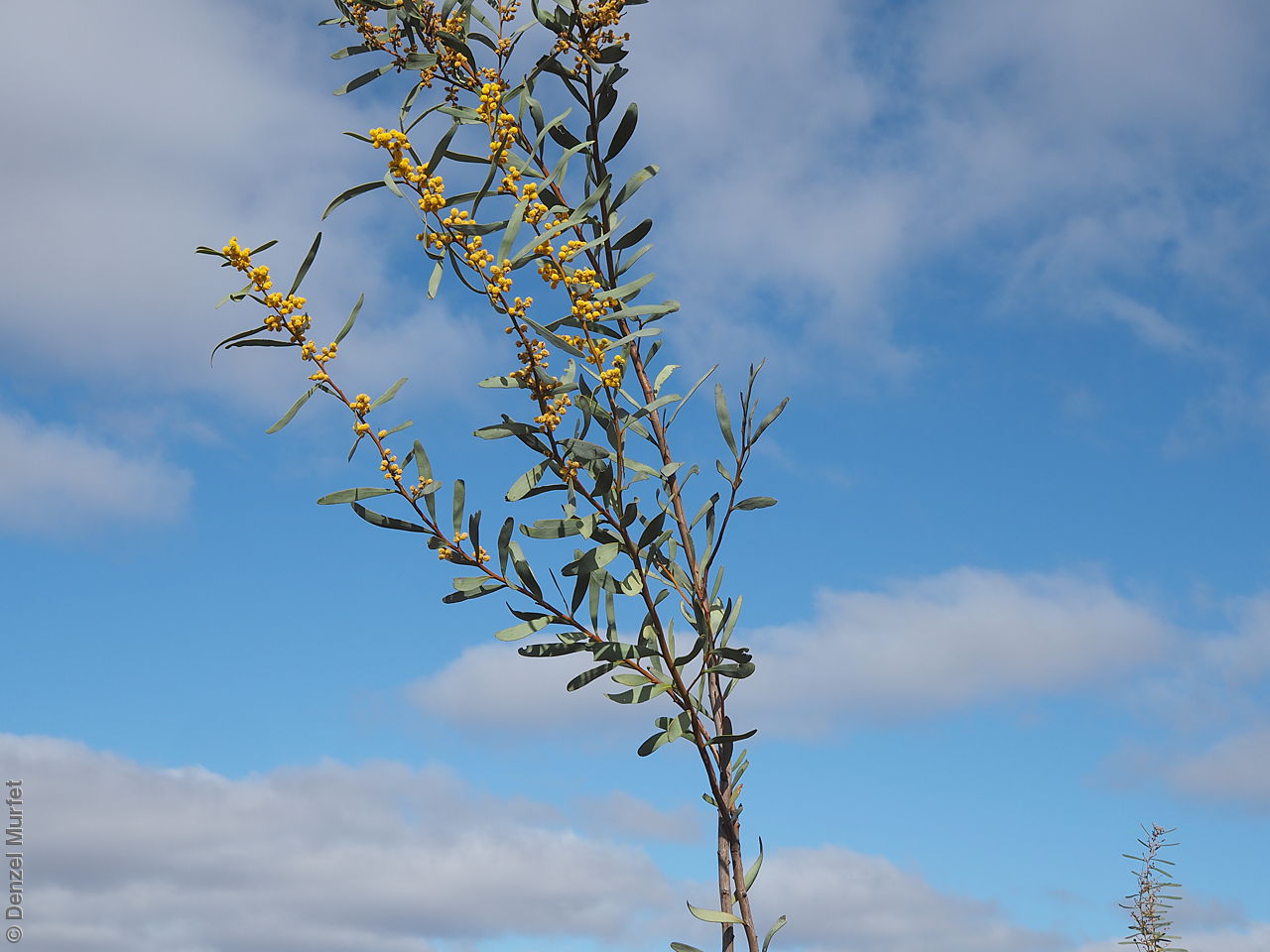
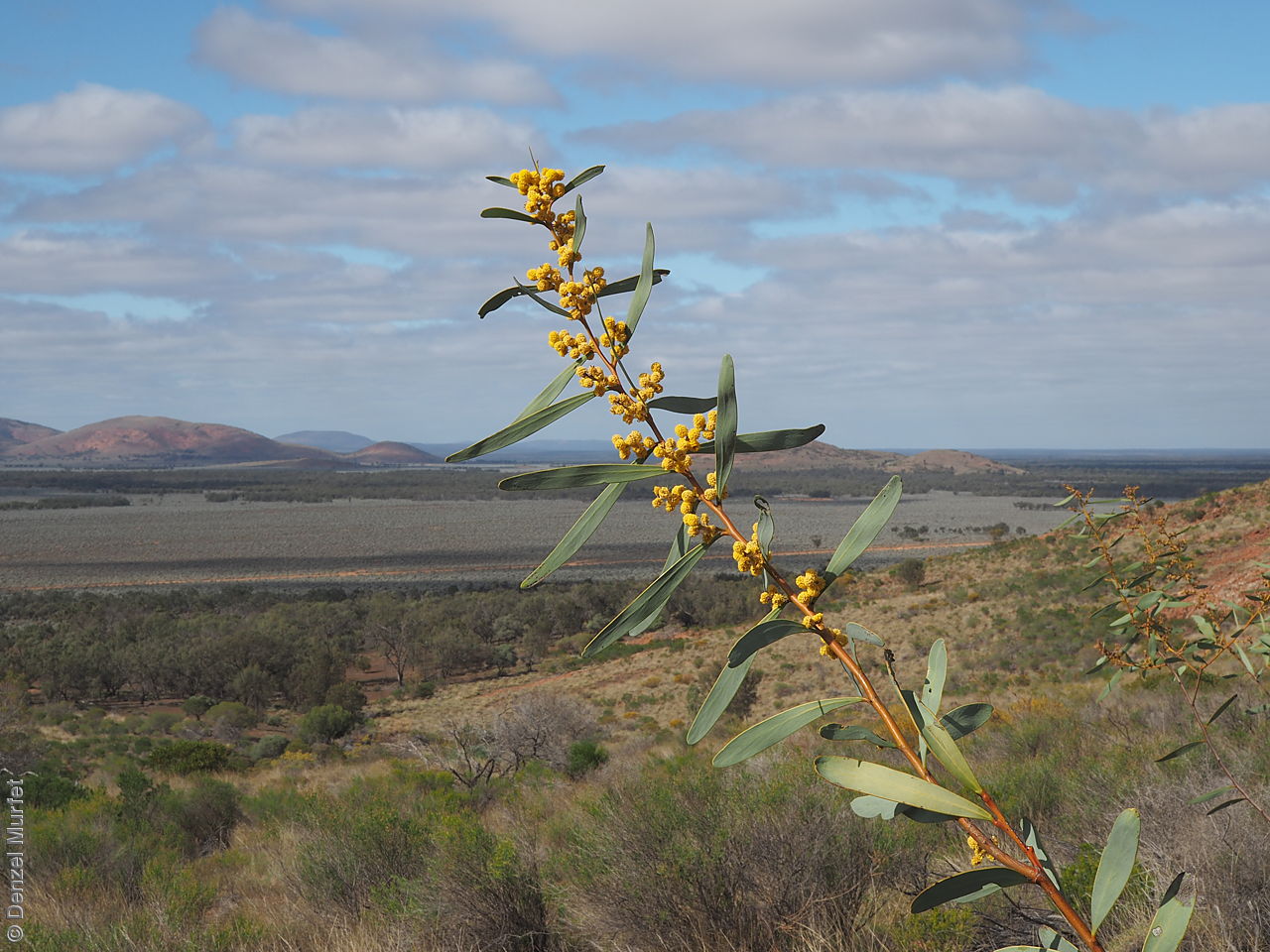
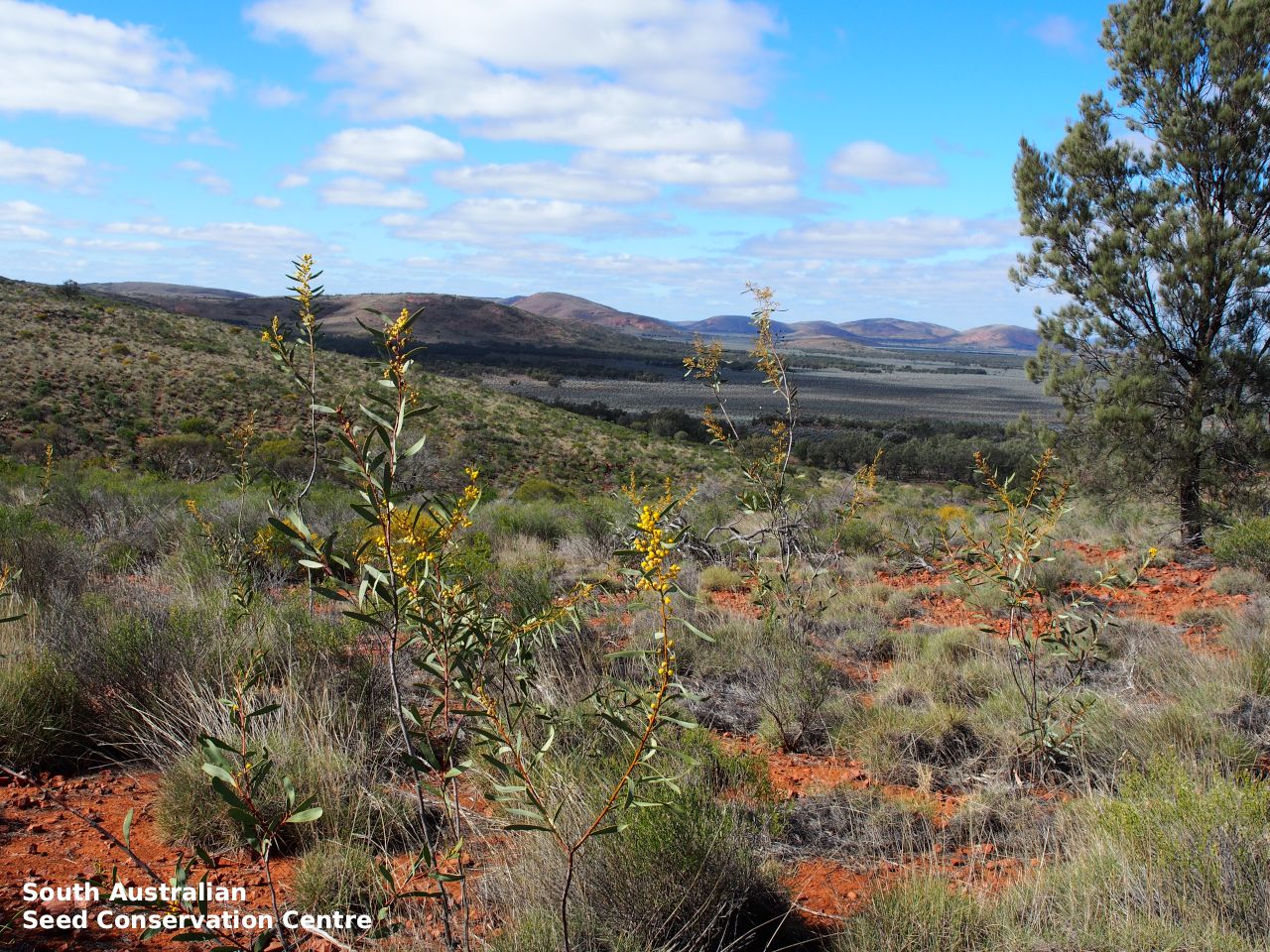
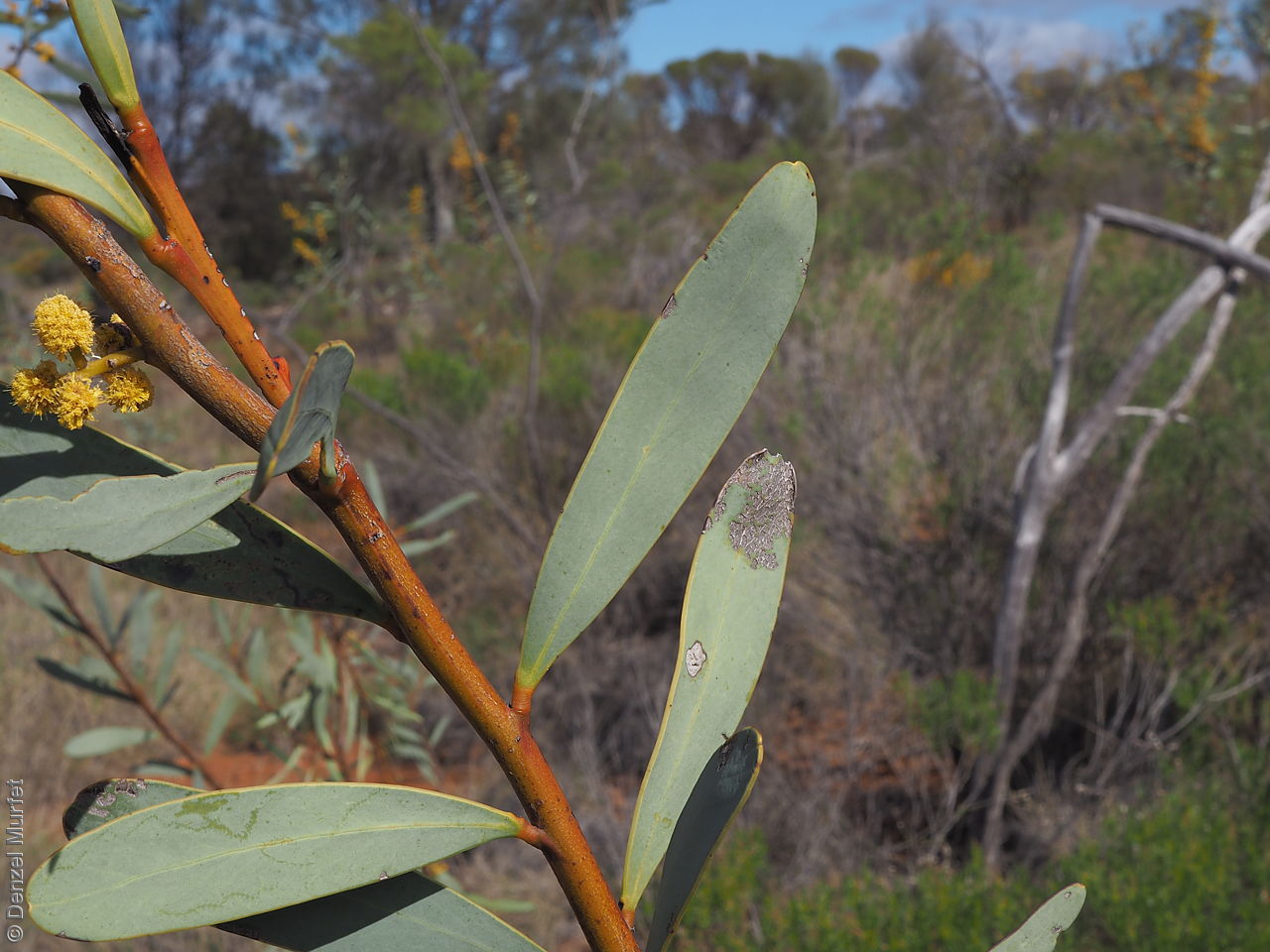
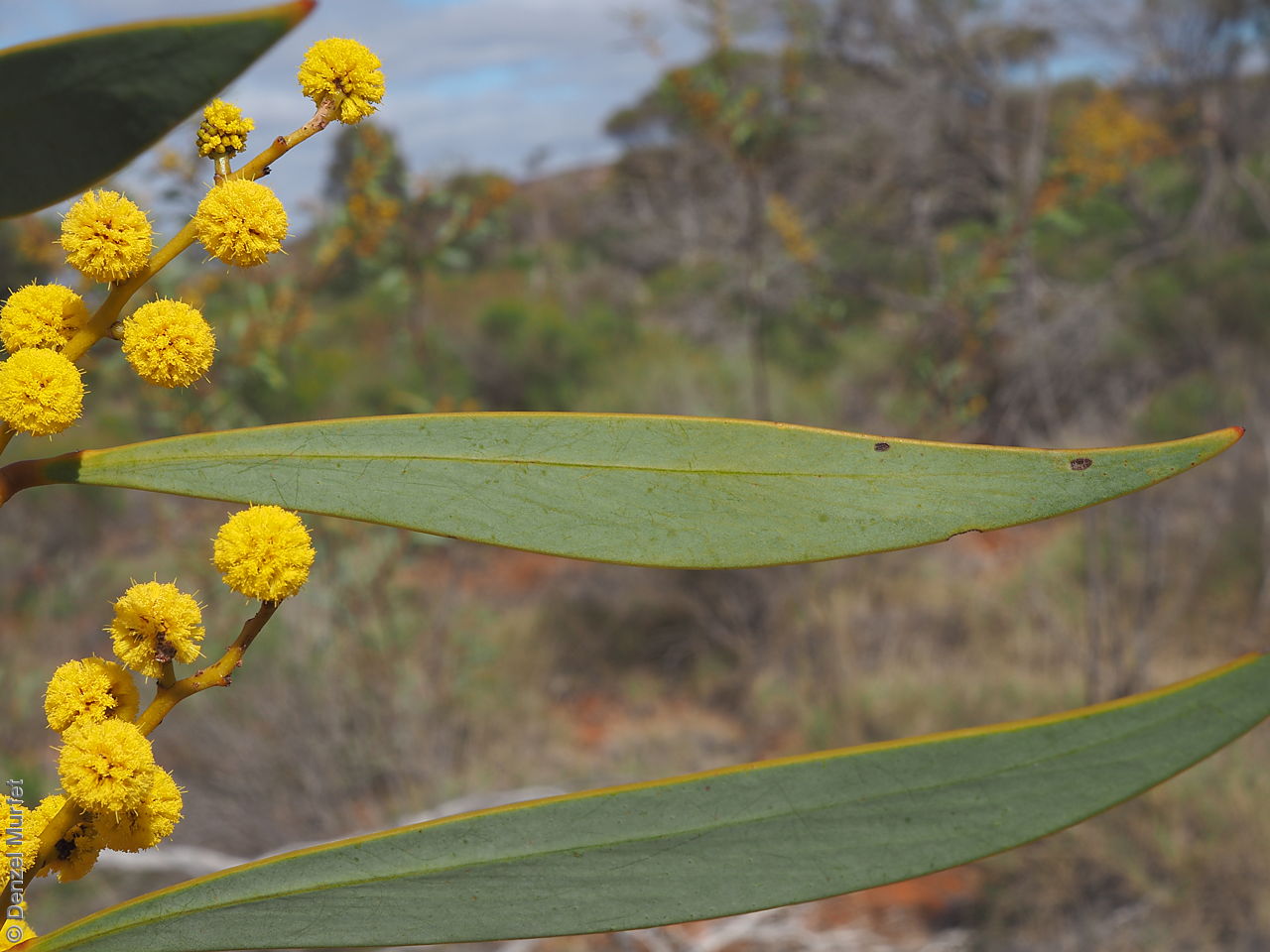
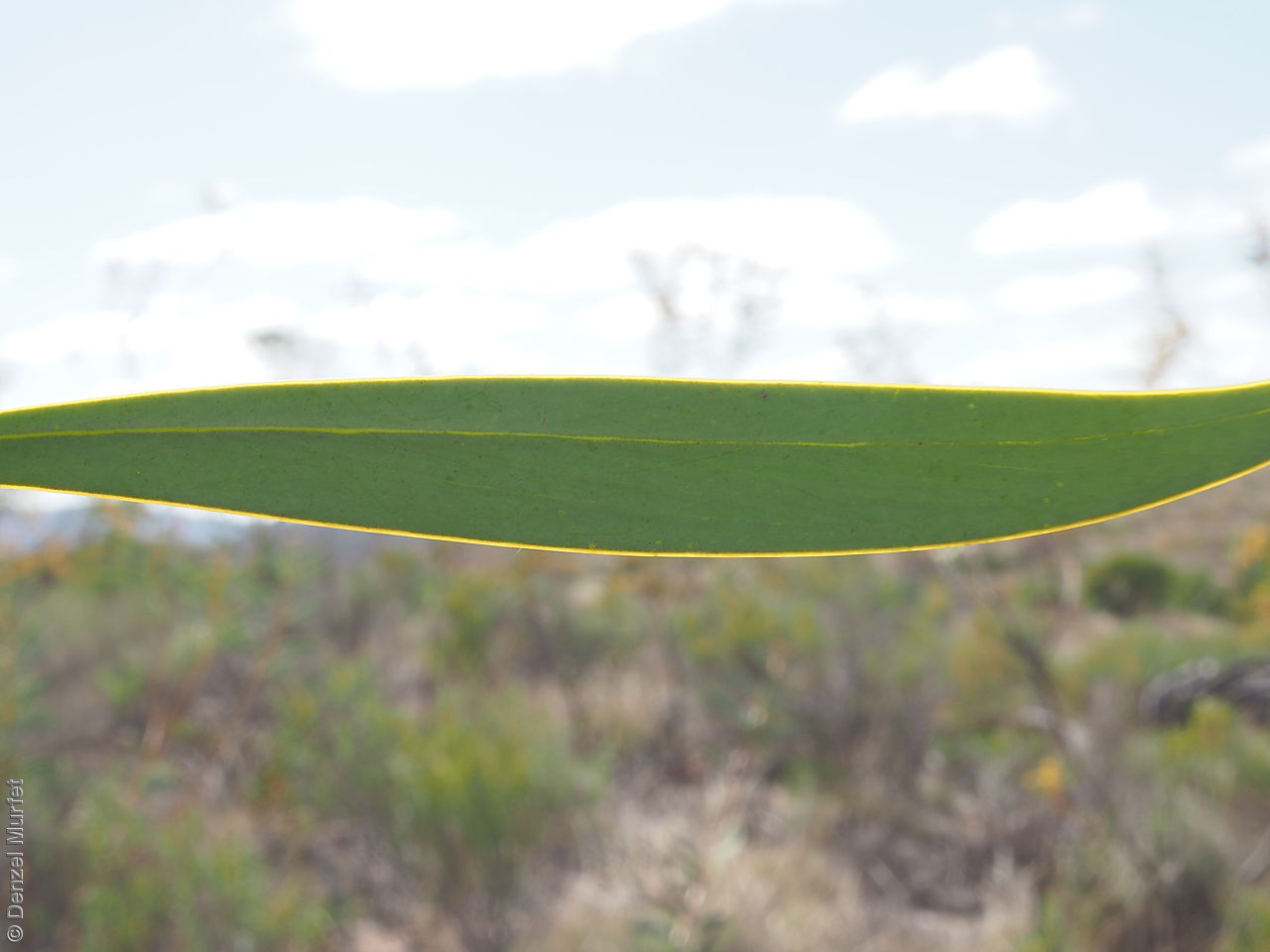
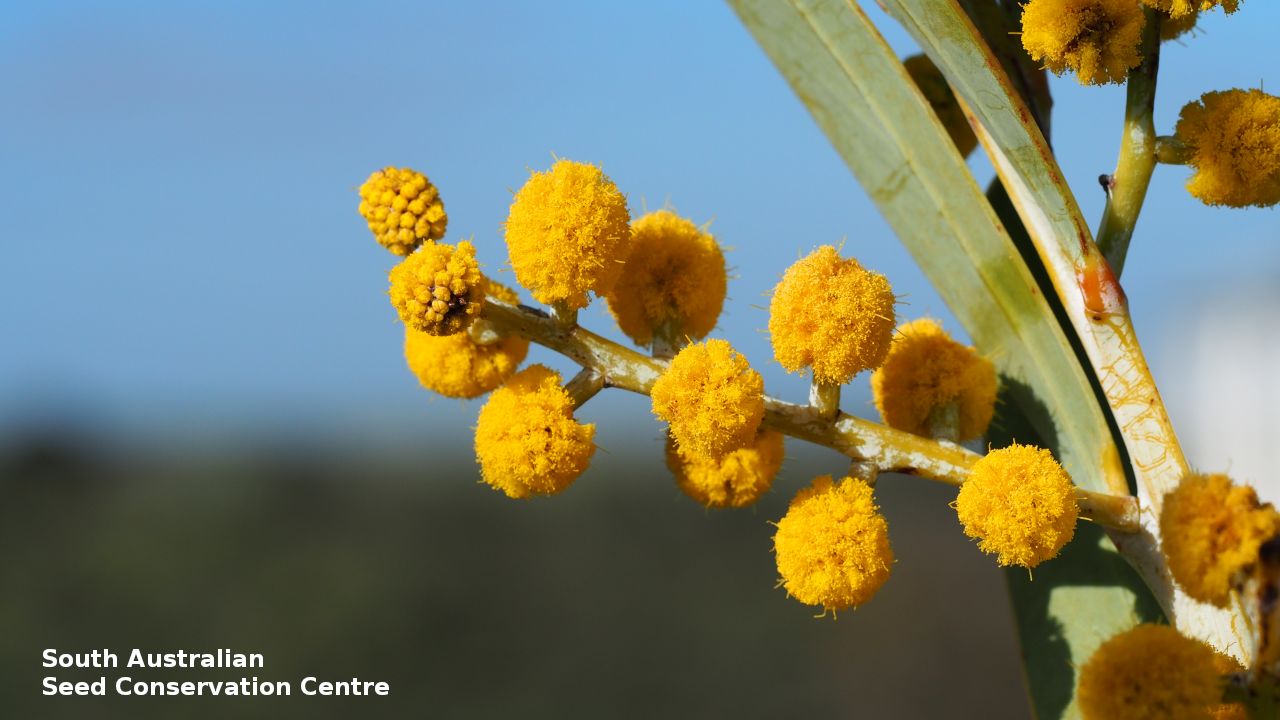
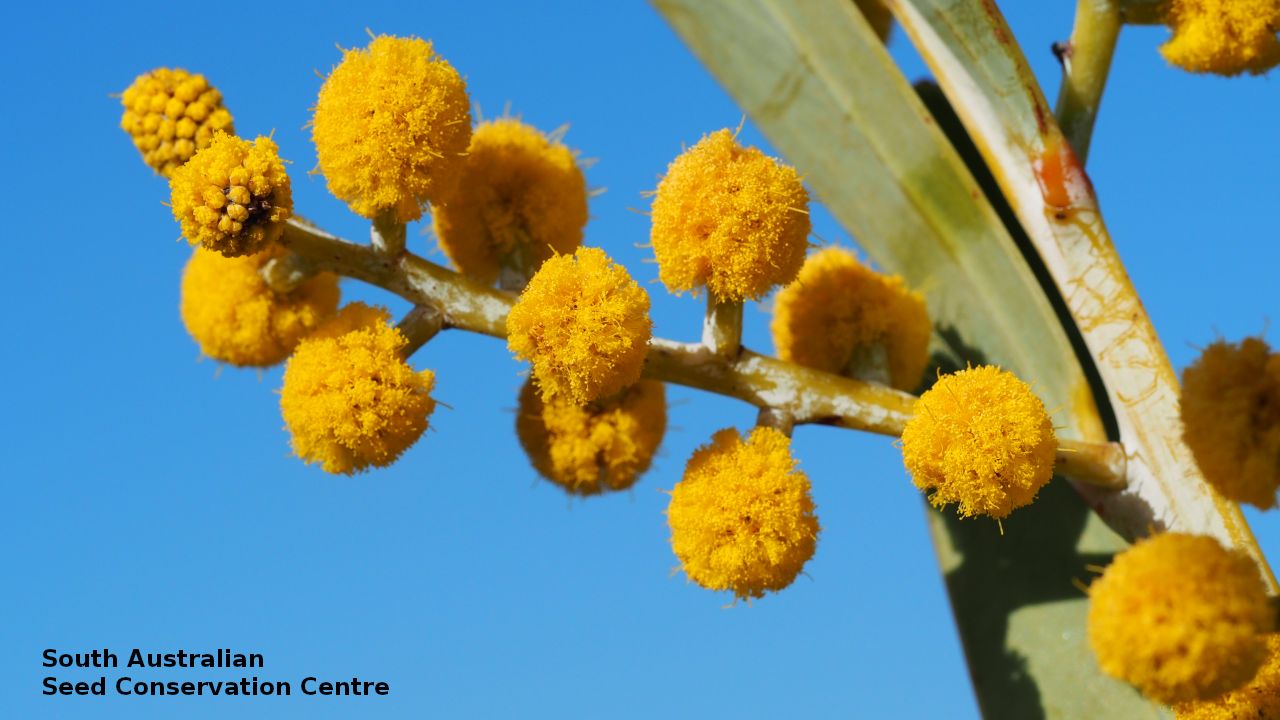
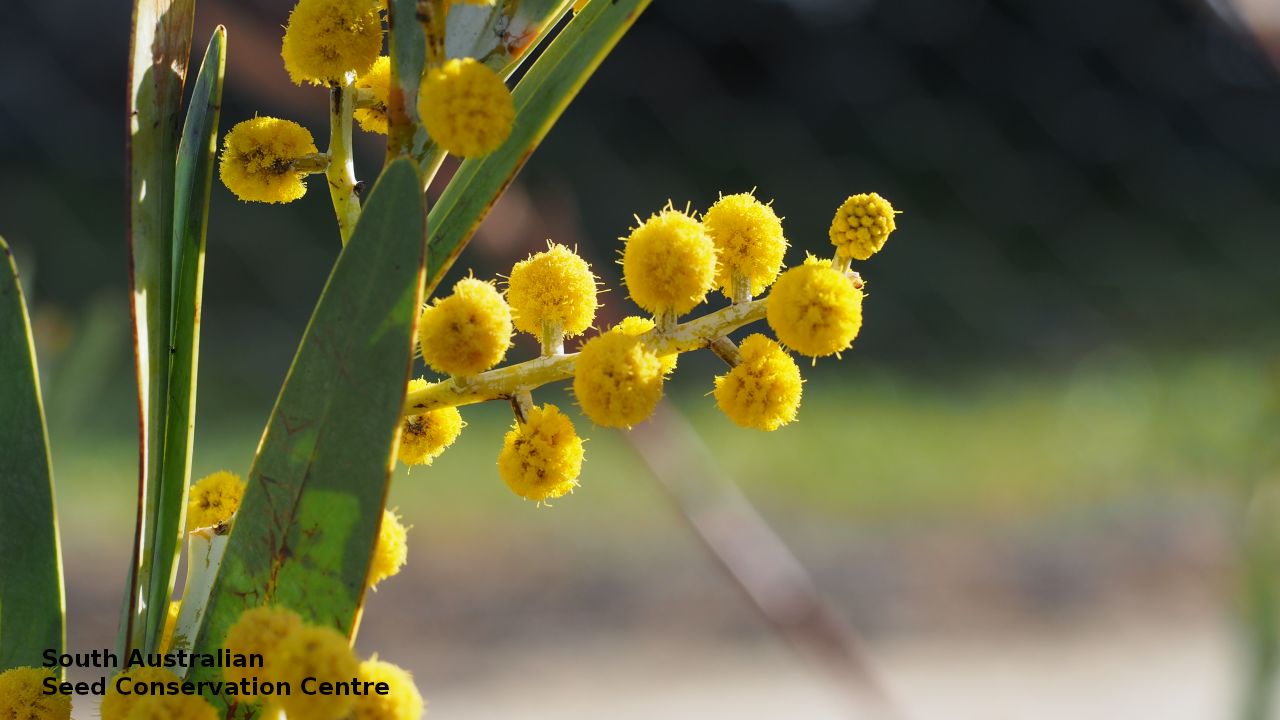
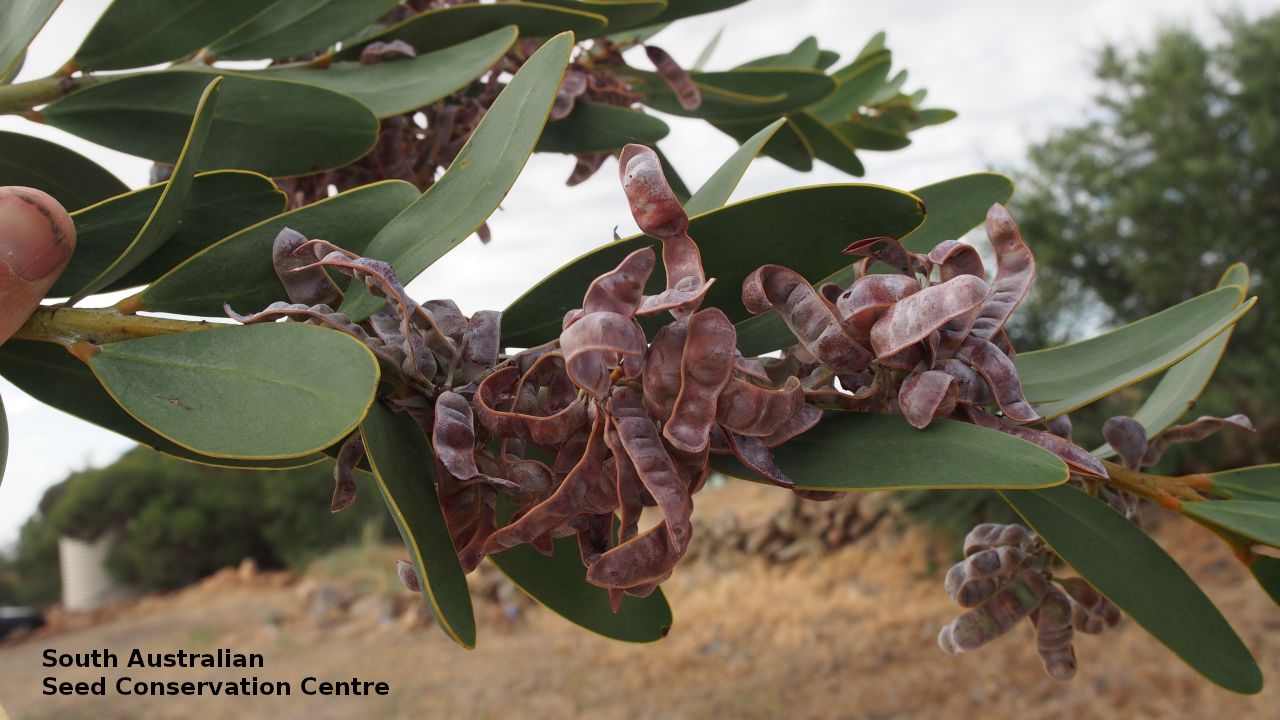
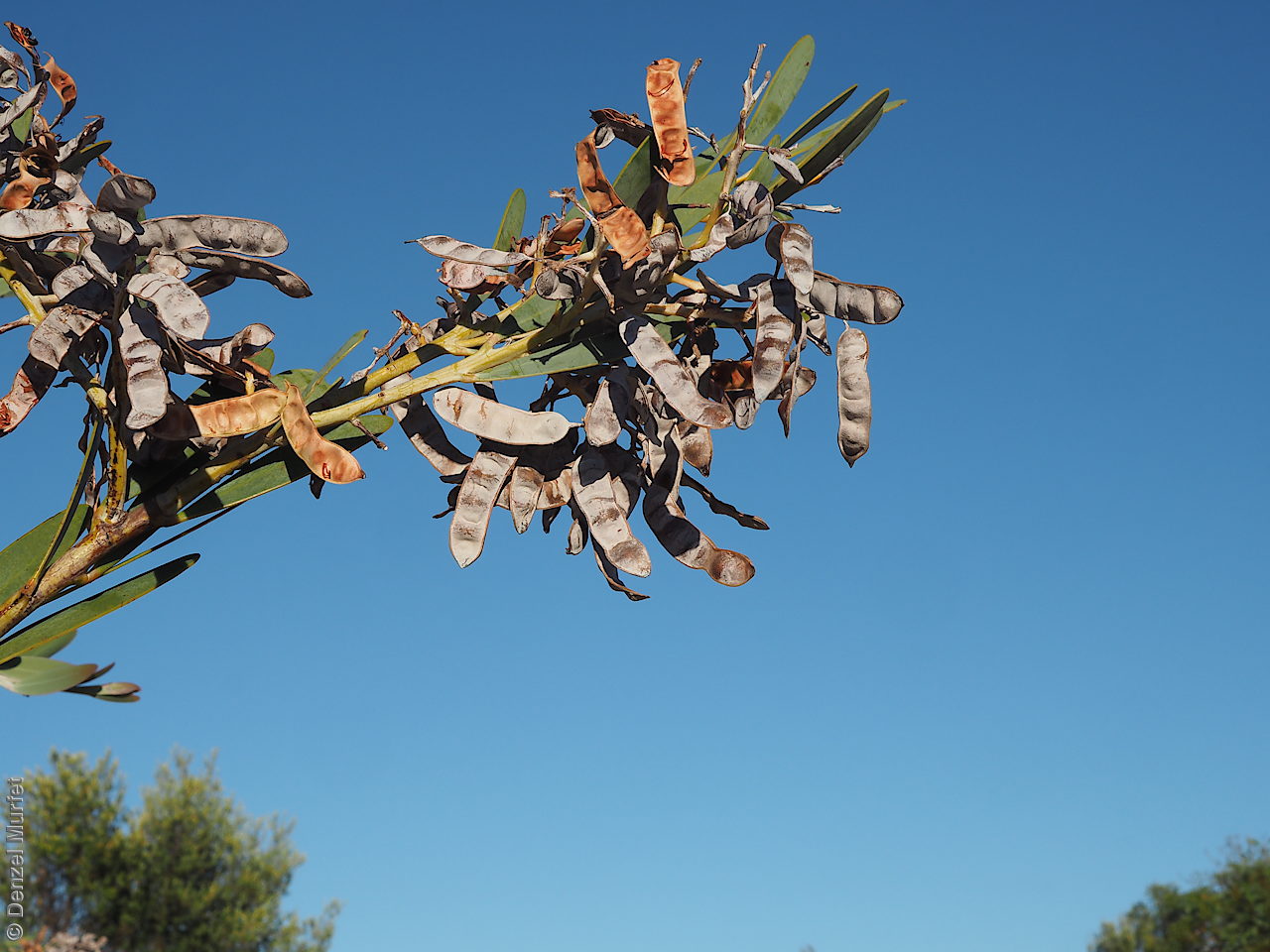
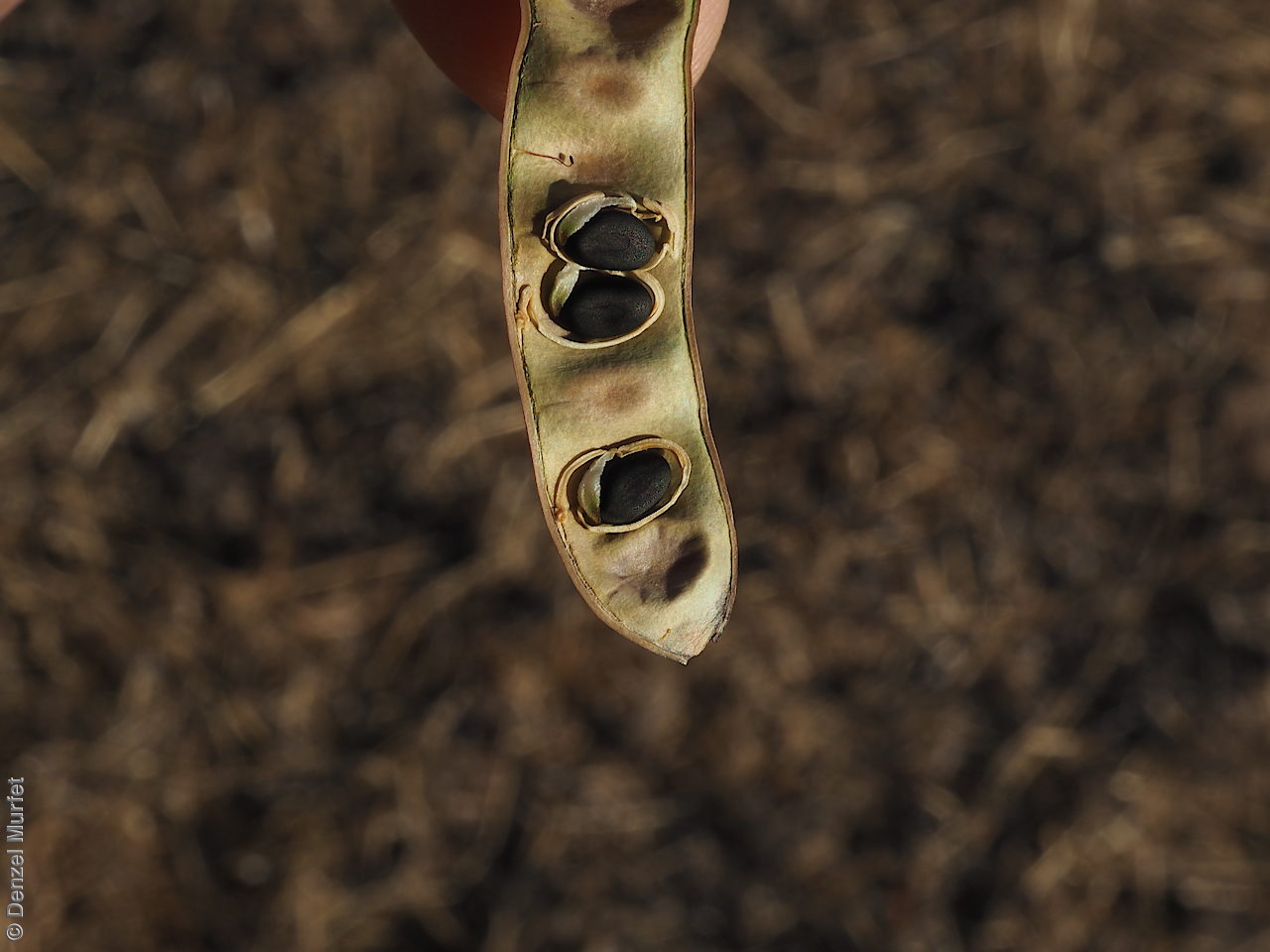
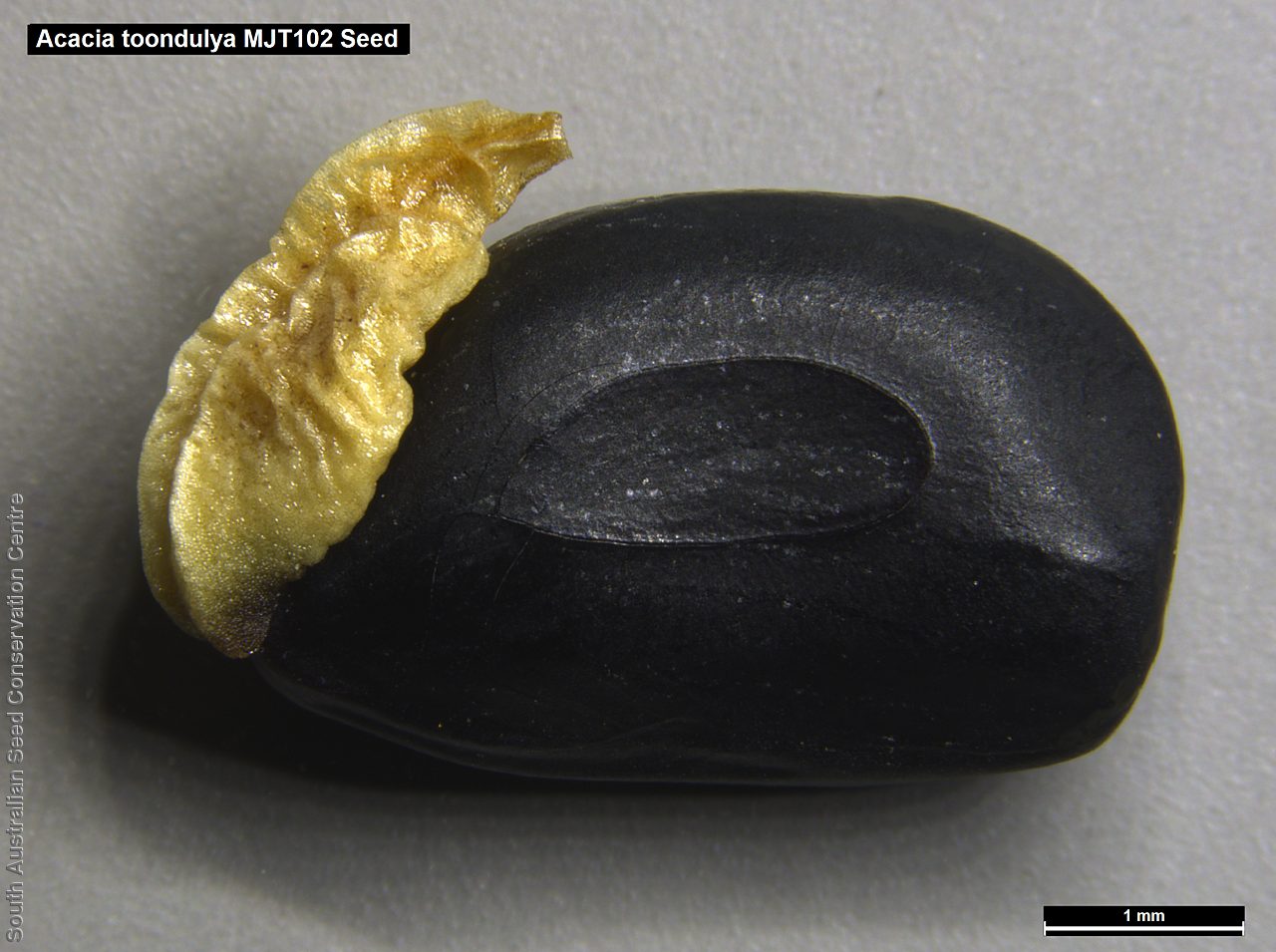
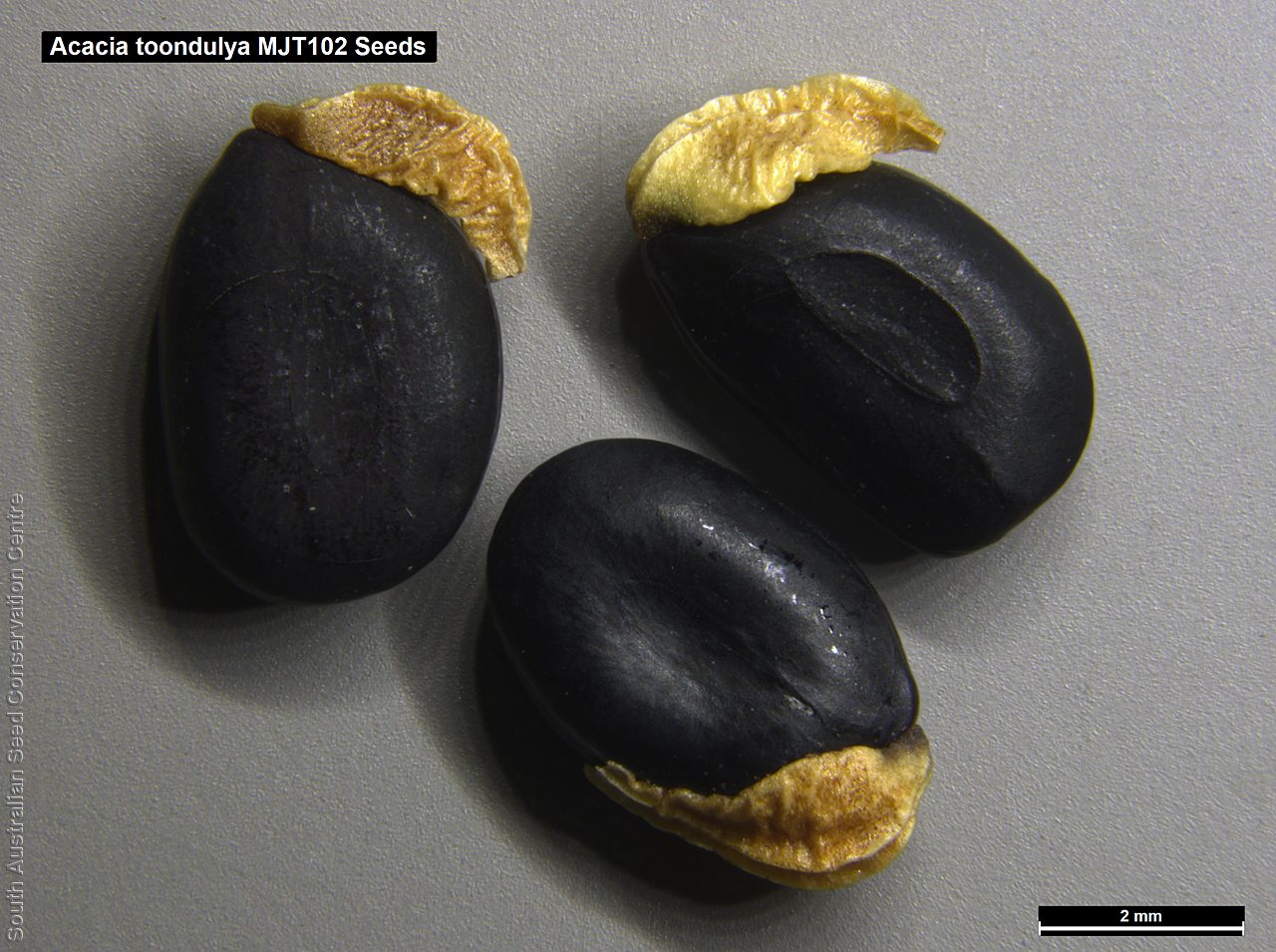
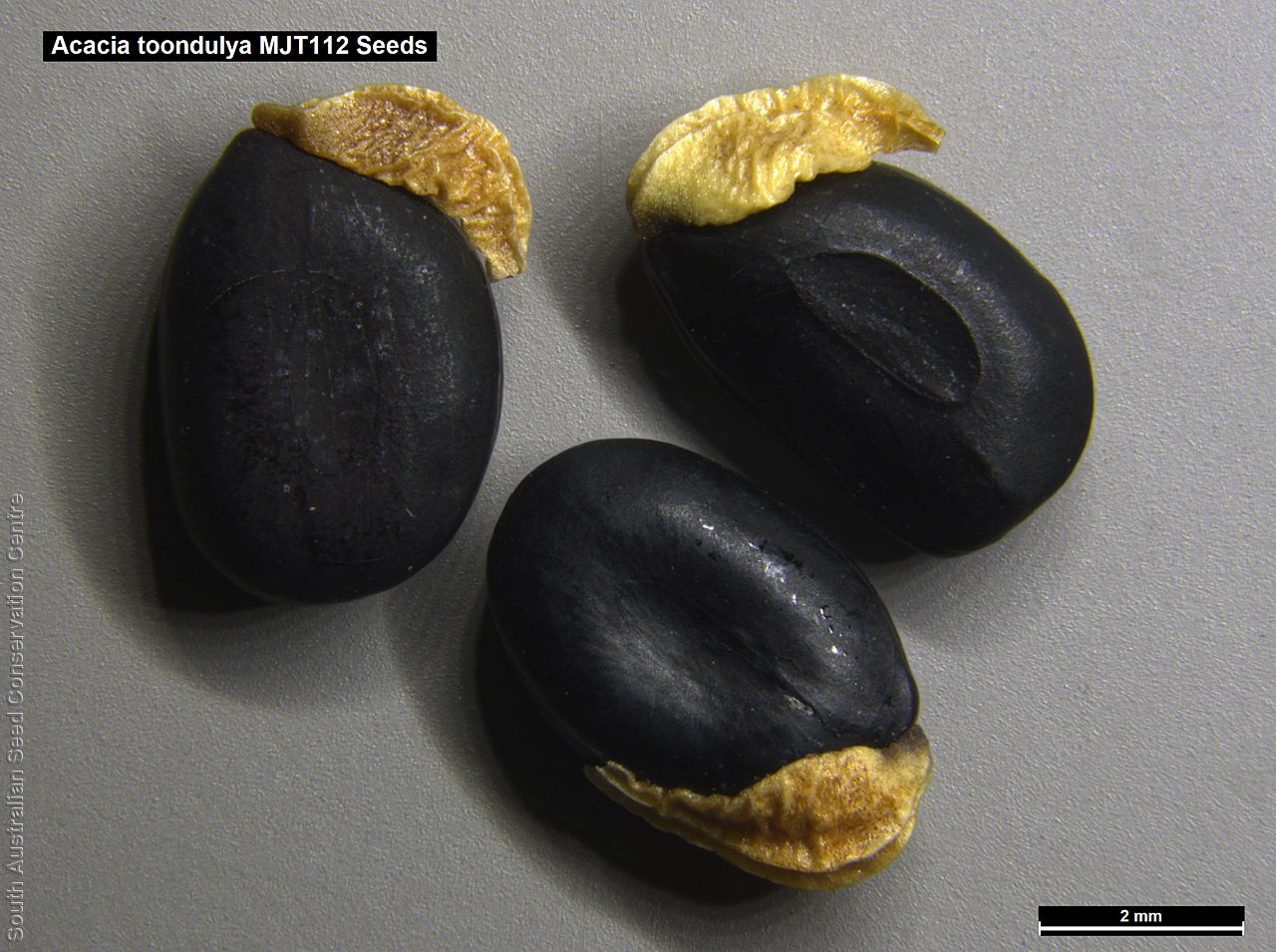
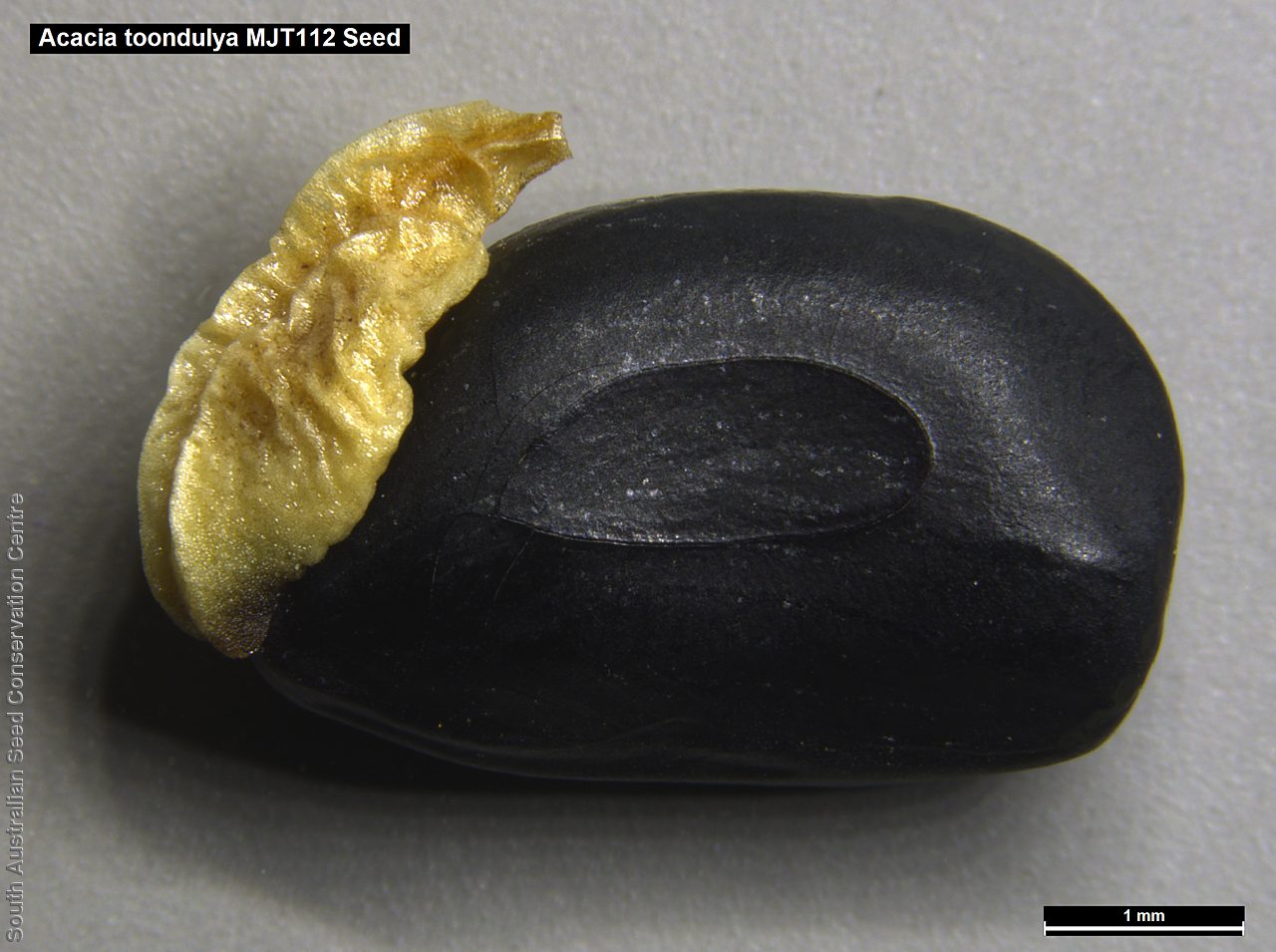

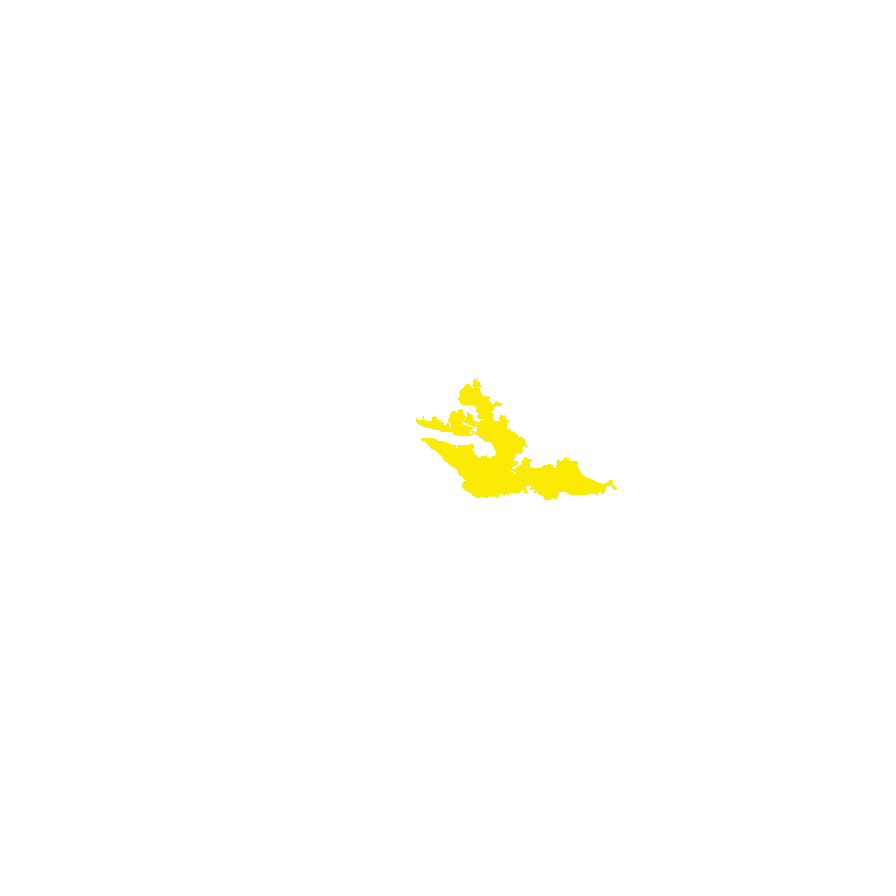
Etymology
Acacia from the Greek 'akakia' and derived from 'ake' or 'akis' meaning a sharp point or thorn and 'akazo' meaning to sharpen. Dioscorides, the Greek physician and botanist used the word in the 1st century AD for the Egyptian thorn tree, Acacia arabica. Toondulya refers to the main known occurrence of this species near Toondulya Bluff and Spring, Eyre Peninsula.
Distribution and status
Endemic to South Australia and restricted to the western Gawler Ranges, on Toondulya Bluff, east to the hills around Hiltaba, and south of Lake Acraman and north on Waverly Hill, growing on low rounded hills of granite and shale on red-brown loam in open shrubland. Native. Rare in South Australia.
Herbarium region: Eyre Peninsula
NRM region: Eyre Peninsula
AVH map: SA distribution map (external link)
Plant description
Erect, slender tree to 4 m high wih smooth grey bark and branchlets angled at extremities and aging to dark, red-brown. Leaves narrow to broadly elliptic to narrowly oblong to 12 cm long and 39 mm wide; straight, green to sub-glaucous, often drying light yellow-green, midrib central to slightly excentric. Marginal nerves prominent, thick, often drying yellow-green, lateral nerves visible but not prominent, gland 1, rarely 2 along upper margin. Inflorescences racemose, occasionally paniculate on terminal branchlets with globular, deep-yellow golden flower-heads. Flowering between July and September. Fruits are dark brown, narrowly oblong, straight to slightly curved pod to 80 mm long 13 mm wide, raised over seeds alternately on each side. Seeds are hard, black ellipsoid seed to 6 mm long an 4 mm wide. Seed embryo type is investing.
Seed collection and propagation
Collect seeds between November and December. Collect mature pods that are turning brown, with hard, dark seeds inside. Place the pods in a tray and leave to dry for 1-2 weeks or until the pods begin to split. Then rub the dried pods to dislodge the seeds. Use a sieve to separate any unwanted material. Store the seeds with a desiccant such as dried silica beads or dry rice, in an air tight container in a cool and dry place. From one collection, the seed viability was high, at 95%. This species has physiological dormancy that needs to be overcome for the seed to germinate (e.g. nicking or softening the seed coat).
| Location | No. of seeds (weight grams) | Number of plants | Date collected | Collection number Collection location | Date stored | % Viability | Storage temperature |
|---|---|---|---|---|---|---|---|
| BGA MSB | 10,300 (222.9 g) 10,300 (222.9 g) | 100 | 7-Dec-2005 | MKJ102 Gairdner-Torrens | 1-Aug-2006 | 95% | -18°C |
Number of plants: This is the number of plants from which the seeds were collected.
Collection location: The Herbarium of South Australia's region name.
% Viability: Percentage of filled healthy seeds determined by a cut test or x-ray.